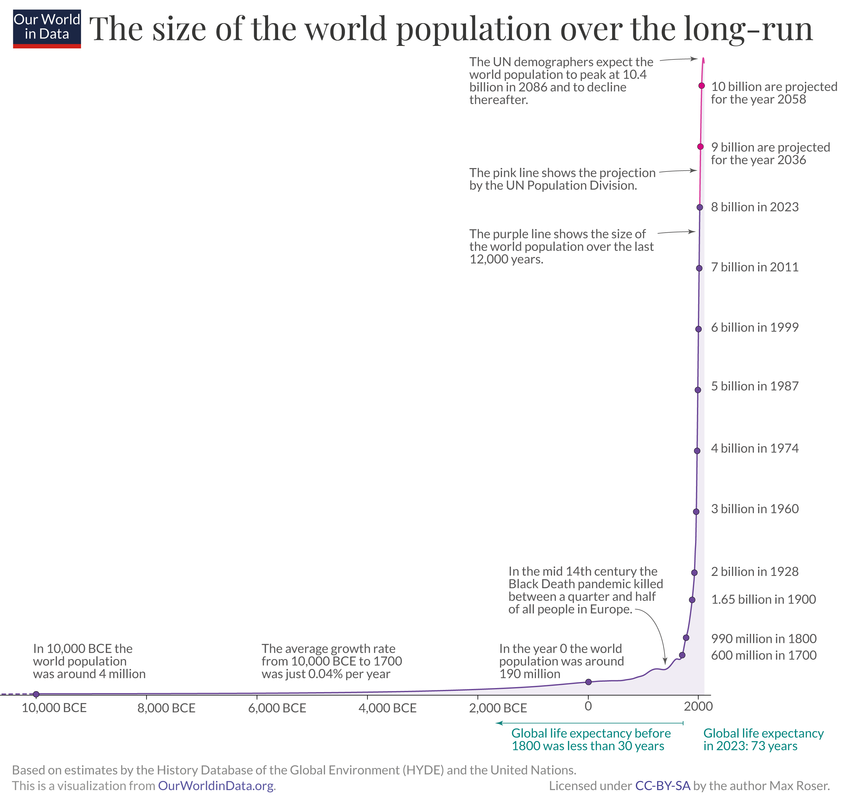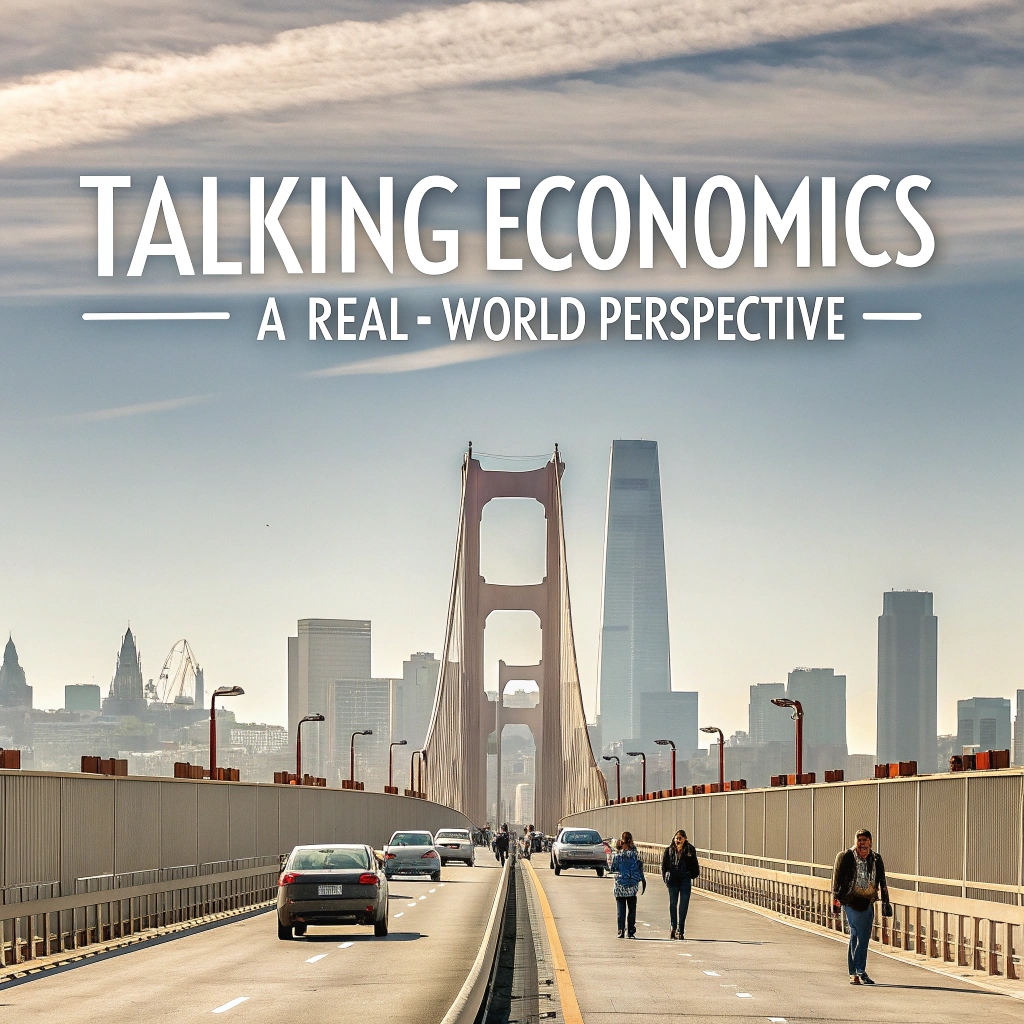Today, over 8 billion people inhabit the Earth. Such a large population living together is a relatively recent phenomenon. Around 1500, at the beginning of the Age of Exploration, the global population was only around 500 million. Following the Industrial Revolution, the population rapidly increased, surpassing 1 billion in the mid-1800s. Like a missile launch, the population exploded, reaching 8 billion today, and this population is what drives the modern global economy.

There was a time when a large population was thought to be the cause of a nation’s poverty. Looking at photographs of the impoverished lives of ordinary citizens in China and India, countries with the largest populations, it was hard not to think that way. Even Korea before the 1970s was no exception. Consequently, family planning with the slogan “Regardless of sons or daughters, let’s have only two and raise them well” became an important national policy.
Some economists remain pessimistic about population. Notably, Malthus emphasized that “population increases geometrically, while food production increases arithmetically.” Ultimately, population needed to be controlled to ensure people lived well. However, today, few scholars argue that population is the cause of poverty.
Population growth creates the necessary demand in the market. Of course, demand refers to desires backed by purchasing power, so the birth of a child itself might not be considered an increase in demand. However, the child motivates the parents to work harder. Population growth creates demand, and demand expands the size of the market.
The fundamental reason the latecomer, the United States, caught up to Europe, considered a developed nation, was the continuous growth of its market. The constant influx of immigrants created a massive demand, and meeting that demand required mass production. The United States developed the technology and organization for mass production to meet that demand.
Humans are selfish. That selfishness is composed of various desires: the need for survival and safety, the need to be recognized and loved, the need to grow and succeed, and the need to love and share. Furthermore, humans are very similar, yet possess slightly different desires or different levels of desire. This difference leads to more transactions. If everyone were the same, transactions would be very limited, making market development difficult. Traditional economics did not pay much attention to the diverse needs of humans, but the human desire aspect is an important factor in economic growth. The stages of needs that psychologists talk about also provide important implications for economic growth.
Though not perfect like Maslow’s hierarchy of needs, the lower-level needs of survival and safety must be somewhat satisfied before higher-level needs like relationships or growth arise. Humans crave basic needs first. While some people value honor or worth more than death, survival and safety take precedence over face-saving. When hungry, people are forced to sell their prized accordion. In reality, our economy has grown by producing products and services to satisfy the lower-level needs of humans. Now, the market is overflowing with products that satisfy the need for survival and safety. People are increasingly seeking to fulfill their needs to be recognized and participate. We can see this in the pursuit of luxury goods and the outpouring of writings on the internet. Furthermore, desires for self-growth and coexisting with others by volunteering and donating also emerge. The growth engine of the future will likely be found here.
When people think of economic growth, they associate it with technological development. While that’s true, from an economic perspective, it only addresses one aspect: the supply side. On the other side, the demand side, lies human desire. In fact, the economy has developed through the mutual influence of both sides. Human desire has motivated scientific and technological development, and in turn, technological development has satisfied human desires.
Desires ultimately create the result of quality of life. Alvin Toffler explains the change of the era with new waves. Humanity has grown by creating the first wave of the agricultural revolution, the second wave of the industrial revolution, and the third wave of the information revolution. As a result, our quality of life has also improved.
Quality of life is not simply obtained through an abundance of material possessions. Quality, rather than quantity, is what truly matters. And that quality is related to higher-level human desires. In fact, companies that have maintained mass production systems for a long time have had to adapt to the increasingly complex needs of customers. Global growth is only possible through new products that respond to increasingly segmented needs. New needs create new demand, and to meet that demand, companies create new products and services.
Population growth plays an important role not only in demand but also in supply. Achieving economic growth also requires increased productivity. Population growth increases the labor force, increasing productivity, while also increasing consumer demand and the resulting investment, expanding the market. Therefore, thinking of population as the driving force of economic development is the view of today’s economists.
This is reflected in the selection of BRICs (Brazil, Russia, India, and China) as the next-generation countries to lead the global economy. These four BRIC countries have been gaining attention as emerging economies since the late 1990s. The reason their economies are seen as a driving force for growth is their abundant resources and labor. These four countries occupy 30% of the world’s land area, and as of 2002, their total population accounted for 43% of the world’s population.
In economics, the terms “economic growth” and “economic development” are used differently. Economic development is a broader concept than economic growth. Economic growth refers to an increase in the size of the economy or per capita GDP. On the other hand, economic development is a concept that includes institutions, indicating that the industrial structure is advancing, such as an increase in the proportion of manufacturing or services, income distribution is improving, and the quality of life is improving, such as a cleaner environment.
Economic growth is measured quantitatively, while economic development is a concept that considers qualitative aspects. Therefore, the statement that the economy has grown means that the economic growth rate is higher than the population growth rate. From another angle, the higher the economic growth rate is than the population growth rate, the higher the per capita GDP increases.
In fact, the global economy began to grow in line with the rapid increase in population. Of course, it is unclear whether population growth accelerated economic growth or whether the economy grew, leading to more population, but it is true that economic growth is outpacing population growth as the population increases. As a result, per capita income has increased rapidly.
Population growth means not only that demand increases but also that productivity increases. A large population means that there is the potential for the market to grow. When people gather, there will be more transactions with each other, and the market will grow. Both supply and demand will increase.
However, more importantly, people develop through trading and competing with each other through encounters. They do not grow in a simple 1+1 manner but develop exponentially by creating synergistic effects. It is not just a synergistic effect in productivity. Thoughts and technologies create network effects and expand and grow rapidly. New ideas and innovative thoughts are born in that network.
We call areas where many people live cities. As the market grew and merchants increased, commercial cities were created. As industry developed, industrial cities were created to use energy efficiently and receive labor smoothly. In those places, everyone is a teacher to each other. Alfred Marshall called such knowledge “knowledge and information that are ‘in the air.’” And he explained why cities become the source of innovation and progress as follows:
“For the mysteries of the trade are no longer mysteries, but are as it were in the air, and children learn many of them unconsciously.”
Learning from others and unknowingly teaching others is becoming more active today because people are meeting more often. Cities have enabled people to meet each other. And they were customers and teachers to each other. The place where people meet is the market and a university of life.
In order to prove that the East was better off than Europe for a while, we need to look at production volume or income, but it can be estimated simply by the urban population. This is because the production volume of a country is usually proportional to the urban population. According to <The Shift of Wealth>, the largest city in the world in the 13th century was Hangzhou in China. At that time, the largest city in Europe was Venice in Italy, with a population of only 160,000, but the population of the city of Hangzhou was 600,000. Marco Polo introduced Hangzhou to the West as ‘Quinsai,’ which means ‘City of Heaven.’ Greg Claisdale, the author of <The Shift of Wealth>, argues that Hangzhou deserves to be called Quinsai because it is undoubtedly the finest and most magnificent city in the world.
According to Andre Gunder Frank’s <ReORIENT>, the population of Nanjing and Guangzhou in China in the early 17th century exceeded 1 million each. On the other hand, the total urban population of Western Europe at that time did not even reach the city of Guangzhou in China.
European cities developed rapidly after the Industrial Revolution in England. Human resources and material resources were concentrated through the city, and technology and innovation for mass production were achieved there. The dynamism of the United States was also possible because of the constant influx of new population.
This population trend may be the most important factor in drawing the current economy and the future of the United States.


답글 남기기